
Balance of Power is a seminal Cold War strategy game from publisher Mindscape that invites you to navigate superpower tension through deft diplomacy rather than brute force. The game’s turn-based system pushes you to weigh every political move, echoing the calculated gambits of Civilization while channeling the territorial brinkmanship of Risk. Because escalation can trigger nuclear catastrophe, every decision matters, making each session a fresh intellectual challenge. Play this timeless game online, match wits against the AI, and discover why its elegant mechanics continue to fascinate newcomers and veterans alike.
Released by Mindscape and designed by Chris Crawford in the mid-1980s, Balance of Power captured the geopolitical anxiety of its era without dating itself to a specific news headline. Instead of rewriting history, the game builds a flexible simulation where the United States and the Soviet Union compete for influence across a stylized world map. Refusing to glamorize conflict, it measures success by prestige rather than territory or casualties, subtly reminding players that reputation can alter global outcomes more than sheer firepower. Each yearly turn passes through diplomatic cables, covert actions, and subtle alignments, asking you to anticipate the rival’s next move while steering clear of Armageddon. Even decades later, that tension remains palpable because the underlying design abstracts power politics in a way that feels perennially relevant. The setting may evoke the Cold War, yet the lessons in restraint, perception, and negotiation translate seamlessly to any era of international relations—one reason the game’s reputation never fades.
Balance of Power is deliberately cerebral. As you issue policy directives—granting foreign aid, backing coups, warning off adversaries—you accumulate prestige points, a visible measure of how the rest of the globe judges your leadership. Winning the game is less about dominating the map and more about outclassing an opponent on the grand diplomatic scoreboard. That focus on influence rather than invasion sets the title apart from contemporary action-heavy strategy games. Players who relish the layered decision trees of grand strategy will appreciate how every intervention ripples across multiple regions, reshaping alliances and inviting countermoves. Brinkmanship looms over each negotiation: push too hard and the other superpower may elevate the crisis, leaving you with the grim choice of backing down—losing face—or sliding into full nuclear war, which ends the game for both sides. The AI’s unpredictable responses keep repeated play sessions fresh, ensuring that no single path guarantees victory. Mastery emerges from observation, patience, and the will to accept a smaller gain now to avoid catastrophic loss later.
Thanks to modern emulation, you can play Balance of Power online without barriers. The original DOS code loads instantly inside a standards-compliant browser, so there is no need for lengthy installations or specialized hardware. Whether you open the game on a desktop monitor or a mobile phone, the streamlined interface remains responsive, allowing you to send diplomatic cables during a coffee break or chart foreign policy on a tablet in the evening. Because the experience is faithful to the DOS release, every menu, map, and data screen preserves its authentic vintage character, complete with crisp pixel art and text-based readouts. Free availability encourages experimentation: start a quick campaign as the United States during your commute, then later try the Soviet perspective to see how shifting ideologies alter strategic priorities. Unlimited access empowers newcomers to learn at their own pace while offering longtime fans the chance to revisit a favorite classic without compatibility headaches. The result is an evergreen play experience that bridges generations, proving that elegant game design transcends technical eras.
Balance of Power’s influence echoes across decades of strategy development. Its prestige system anticipated the soft-power mechanics now common in grand-strategy titles, while its refusal to reward outright war suggested new ways to model conflict avoidance. Designers cite Chris Crawford’s emphasis on narrative logic—decisions that make sense to both human and computer adversaries—as a milestone in artificial intelligence for games. Yet the title’s appeal is hardly academic. Players still celebrate the sudden adrenaline rush when a rival issues a strong diplomatic warning, forcing an immediate calculation of risk versus reward. Victory tastes sweeter here precisely because it can never be taken by force alone; it must be earned through credibility, foresight, and psychological acumen. Over time, graphical fidelity may improve across the industry, but Balance of Power’s minimalist presentation feels more like a deliberate choice than a limitation, focusing attention on the ideas at stake. Its cultural impact, educational value, and pure strategic enjoyment make it a classic worth revisiting endlessly.
Balance of Power endures because it turns the abstract puzzle of global politics into a razor-sharp strategy playground where words weigh more than weapons. To direct your nation, you navigate simple text menus with arrow keys or a mouse, select actions, and confirm moves with a single keystroke—an interface so clear that it remains intuitive on touchscreens. One sliver of arrogance, and nuclear war ends everything; one perfectly timed offer of aid, and an entire region shifts to your side.
All codes used to realize this experience are publicly available, and the game belongs unequivocally to its original authors.
Share game
Share game
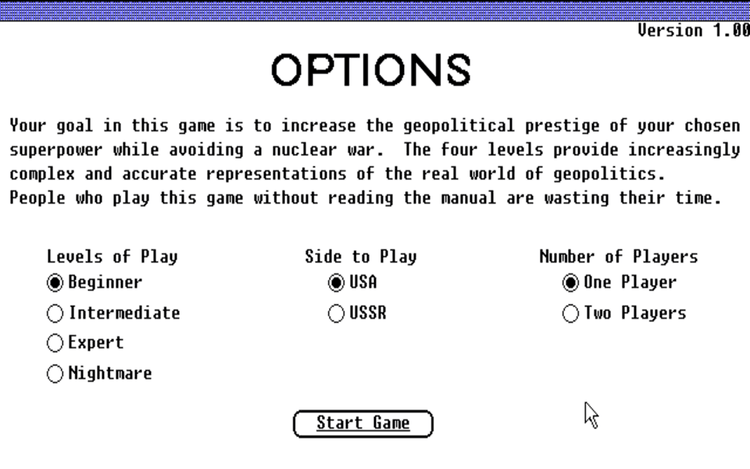
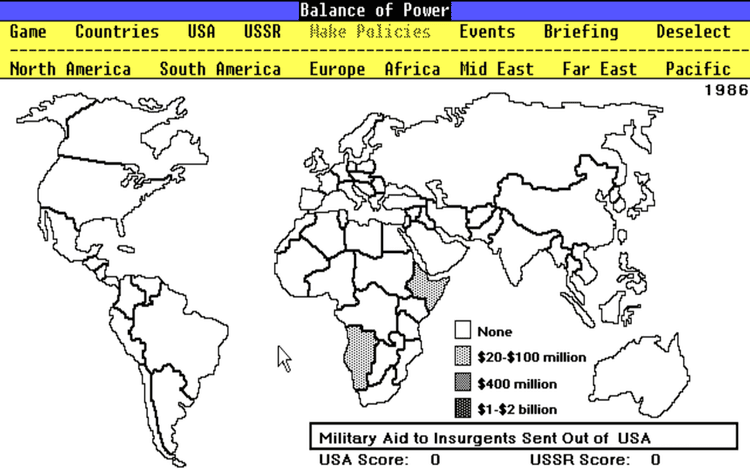
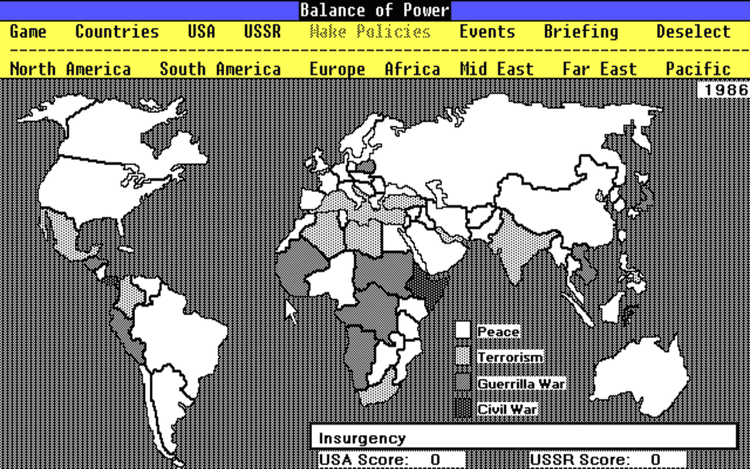
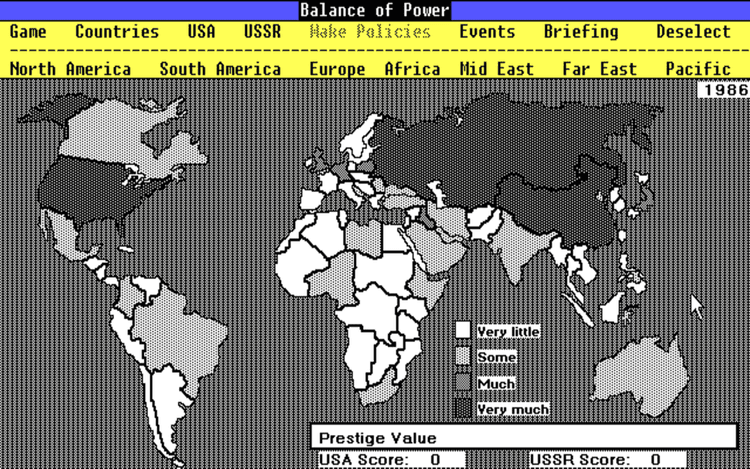
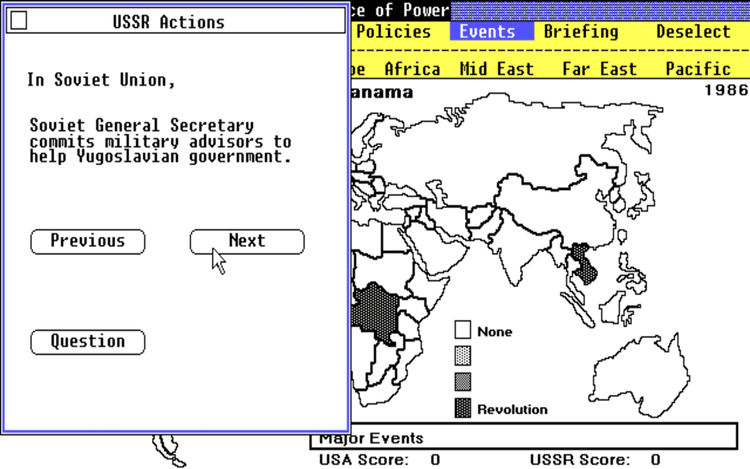
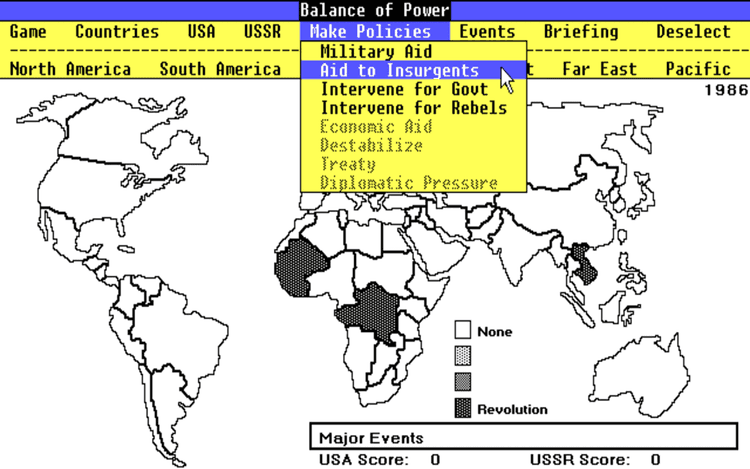
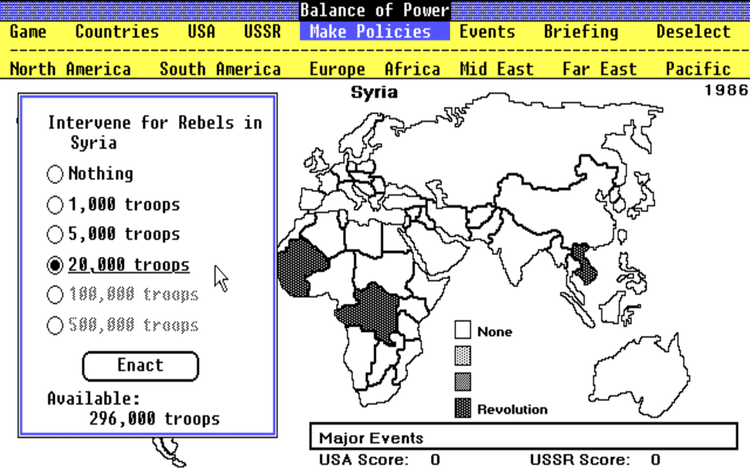
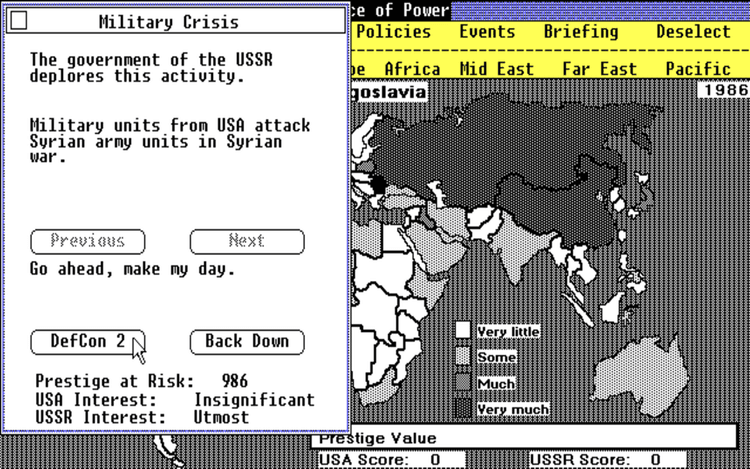
Share game